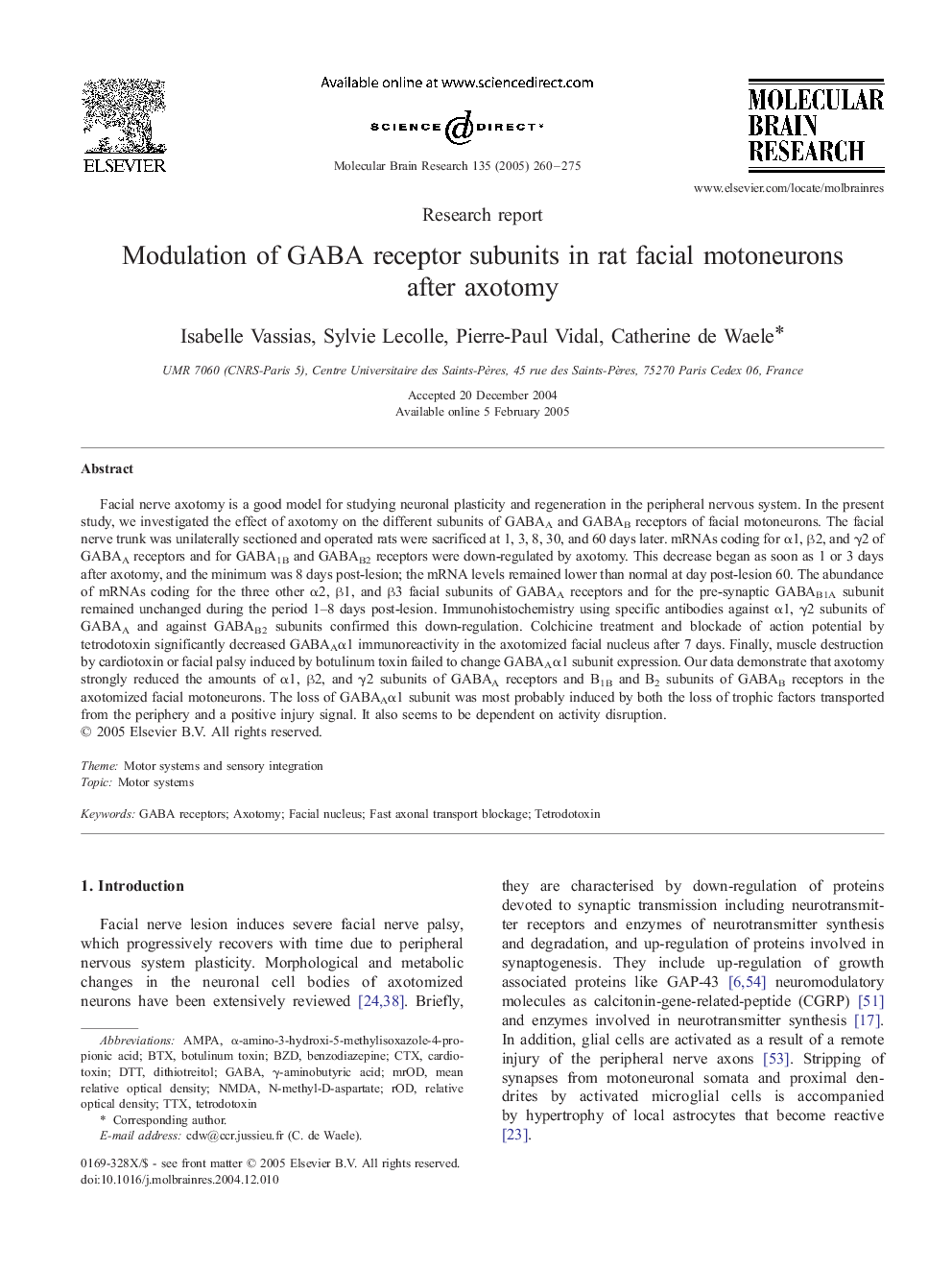| Article ID | Journal | Published Year | Pages | File Type |
|---|---|---|---|---|
| 9410686 | Molecular Brain Research | 2005 | 16 Pages |
Abstract
Facial nerve axotomy is a good model for studying neuronal plasticity and regeneration in the peripheral nervous system. In the present study, we investigated the effect of axotomy on the different subunits of GABAA and GABAB receptors of facial motoneurons. The facial nerve trunk was unilaterally sectioned and operated rats were sacrificed at 1, 3, 8, 30, and 60 days later. mRNAs coding for α1, β2, and γ2 of GABAA receptors and for GABA1B and GABAB2 receptors were down-regulated by axotomy. This decrease began as soon as 1 or 3 days after axotomy, and the minimum was 8 days post-lesion; the mRNA levels remained lower than normal at day post-lesion 60. The abundance of mRNAs coding for the three other α2, β1, and β3 facial subunits of GABAA receptors and for the pre-synaptic GABAB1A subunit remained unchanged during the period 1-8 days post-lesion. Immunohistochemistry using specific antibodies against α1, γ2 subunits of GABAA and against GABAB2 subunits confirmed this down-regulation. Colchicine treatment and blockade of action potential by tetrodotoxin significantly decreased GABAAα1 immunoreactivity in the axotomized facial nucleus after 7 days. Finally, muscle destruction by cardiotoxin or facial palsy induced by botulinum toxin failed to change GABAAα1 subunit expression. Our data demonstrate that axotomy strongly reduced the amounts of α1, β2, and γ2 subunits of GABAA receptors and B1B and B2 subunits of GABAB receptors in the axotomized facial motoneurons. The loss of GABAAα1 subunit was most probably induced by both the loss of trophic factors transported from the periphery and a positive injury signal. It also seems to be dependent on activity disruption.
Keywords
Related Topics
Life Sciences
Neuroscience
Cellular and Molecular Neuroscience
Authors
Isabelle Vassias, Sylvie Lecolle, Pierre-Paul Vidal, Catherine de Waele,
